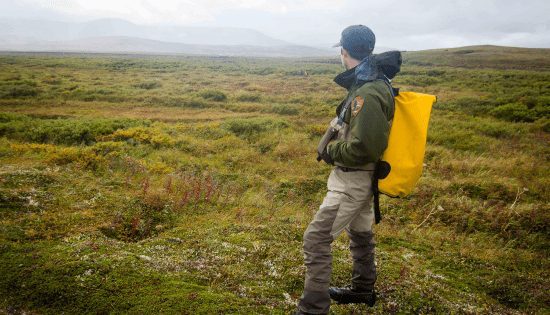Being Bold on National Park Staffing
The narrative that our national parks are being loved to death is a common one, as record crowds and poor maintenance lessen the visitor experience. Another issue of equal importance, but less often discussed, is that the National Park Service (called “NPS,” or “Park Service” below) is suffering from a staffing crisis and low employee morale.
These twin crises come as the service is facing increasing demands to address climate change and contribute to the President’s “America the Beautiful” initiative, an initiative to conserve 30 percent of U.S. lands and water by 2030. To address these growing challenges, as well as new demands on resources, Director Chuck Sams will need to show bold leadership to address staffing woes.
Between 2010 and 2020, the Park Service lost 5,935 employees, 29 percent of the 20,813 staff that remained in 2020. Under the Biden administration, the current proposal is to increase staffing from 19,096 FTE in 2021 to 20,120 FTE in 2022. Notably, this includes no new FTE committed to “Increase Management and Policy Support for Climate Change Decision Making” within the facilities operation and maintenance budget. Hence, staff will continue to be asked to take on additional responsibilities—such as adapting parks to climate change—on top of their existing job assignments.
At the same time, the NPS can be an exceedingly difficult place to work. A report commissioned by the Park Service, the NPS Voices Tour Summary Report 2018, was shelved by agency leadership until PEER released it in November of 2021. The report found a “pervasiveness of disrespectful and abusive behavior,” “high rates of harassment,” and a “lack of accountability for misconduct” at the Park Service. In listening sessions for the report NPS staff identified a significant need for additional permanent employees and noted that it is not sustainable to continue running the Park Service on temporary and seasonal staffing. Chronic understaffing has led to both unreasonable expectations of what staff could get done and unsafe conditions overall, according to NPS employees.
The acute staffing shortage also impacts Park Rangers, leading to national parks that are less safe for everyone. Rangers, who are federal law enforcement officers, have seen their staff drop from 2,471 in 1986 to 1,584 in 2021. This massive loss of Ranger staff occurred while the NPS had identified an ideal level of Ranger staffing at 2,700, and the Park Service has claimed to have a “No Net Loss” policy for these staff.
Based on workplace and staffing problems, it is no surprise that the Park Service ranks 353 out of 436 subcomponent federal agencies in the “best places to work” list for federal employment. Employees ranked the NPS in the lowest quartile of agencies in all but one* surveyed category in 2020.
These staffing and morale problems set up the Park Service for predictable failure in taking on new tasks. As a part of the President’s America the Beautiful initiative, the Park Service will be committing an additional $150 million to creating new parks in underserved communities. Adding more parks will stretch staff even further past the breaking point, unless NPS expands its staff to meet all existing and additional needs.
There is some good news. The Great American Outdoors Act (GAOA) will provide the Park Service the means to address its infrastructure backlog and long-deferred land acquisition needs. However, this legislation from 2020 does not provide long-term funding to address staff shortages. While the Build Back Better bill, passed by the House of Representatives, would allocate billions of dollars for staff, climate and maintenance and historic preservation needs, the legislation appears all but dead in the Senate. This means the Park Service will have GAOA funding to build new parks, but no increase in funding to deal with staffing shortages and maintenance backlogs that already impact existing parks.
A priority for PEER moving forward will be ensuring political leaders support the development of the Park Service’s workforce. This will require dedicated appropriations from Congress empowering the NPS to bring on new talent to address our country’s pressing conservation and climate goals, as well as a commitment by Director Sams to rebuilding morale within the NPS, making it an attractive place for people to work.
*Employees ranked the Park Service slightly higher, but below median for “Innovation.”
 Hudson Kingston is a Litigation and Policy Attorney at PEER, a Minnesota enthusiast and one-time professional baker.
Hudson Kingston is a Litigation and Policy Attorney at PEER, a Minnesota enthusiast and one-time professional baker.
